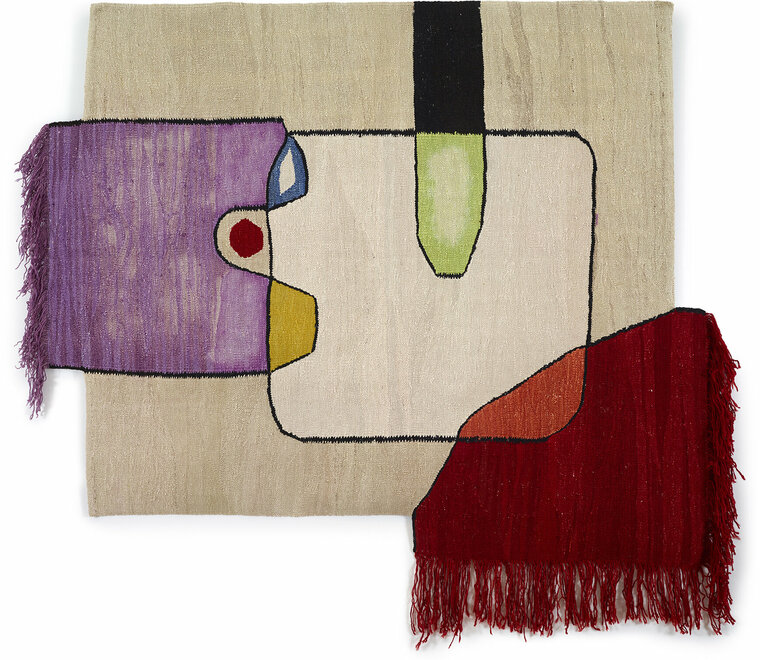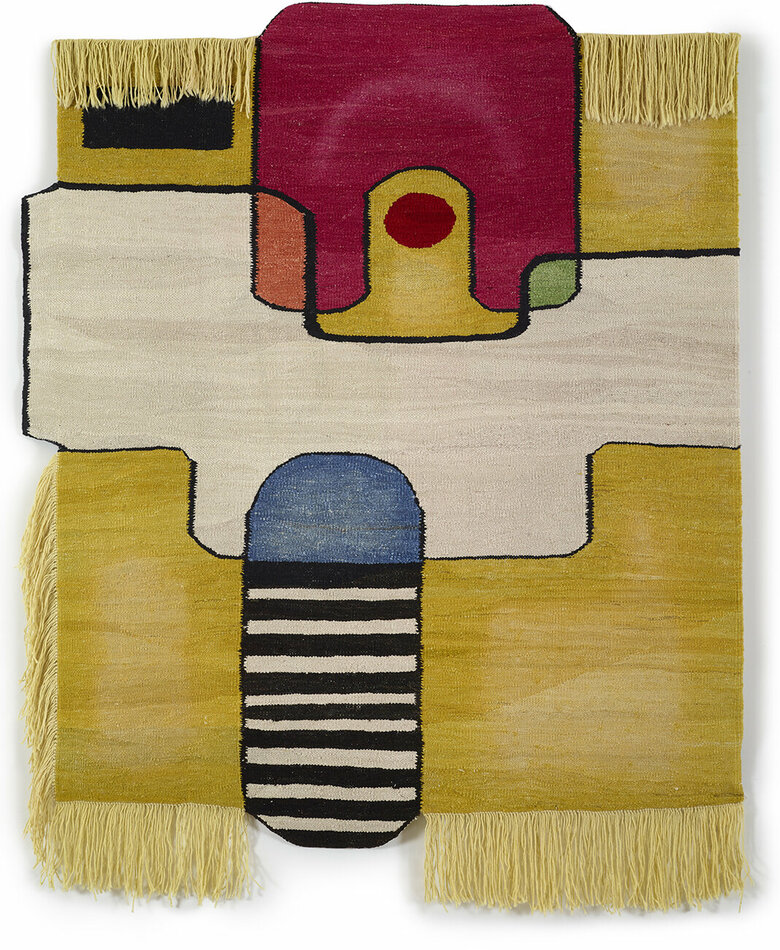Kilim V is a handwoven wool kilim created by Lebanese artist Leila Jabre Jureidini. A kilim is a flat-woven textile made on a loom by interlacing vertical and horizontal threads. It has no raised surface and is often used as a rug or wall hanging. This kilim was woven in collaboration with Iwan Maktabi, a renowned rug atelier based in Beirut. The composition features a simple, structured arrangement of rectangles and lines. The colors are soft and muted warm ochres, faded reds, slate blues, and browns. These shapes and tones create a quiet, even rhythm across the surface. There is no single focal point; instead, the eye moves across the pattern and the spaces in between. The design is minimal, but is meant to suggest ideas of memory, time, and heritage.
The piece is part of Jabre Jureidini’s 2023 solo exhibition Filiation, which explores her personal connection to her family’s now-closed textile factory, the “Spinning & Weaving Industrial Company.” Founded by her grandfather, the factory was once a major part of her family’s life. It processed Egyptian cotton and handled the full cycle of weaving. Jabre Jureidini had not visited the site for many years until she returned to photograph it as a tribute for her grandfather’s 80th birthday, an act that sparked the idea for this series. Although the factory never made tapestries, the artist chose the kilim format as a way to honor her family's legacy.
Traditionally, kilims are used in domestic or ceremonial contexts. Still, in Jabre Jureidini's works, they become vessels of memory through her use of weaving as a method to preserve and reinterpret the past. The abstract shapes on the tapestry are inspired by the memory of her family's now-closed textile factory, its layout, and complex architectural structure. This is not a nostalgic piece; rather, it is reflective as the artist transforms a historically functional object - tapestry - into an artistic one, weaving abstract forms that carry a profound depth of both collective and personal emotions and meanings.
Her work bridges art and craft, personal and political, offering a quiet yet powerful tribute to labor, cultural inheritance, and collective memory. It also speaks to her belief that even as traditions are passed down, they continue to evolve. Through this meditative process, she reclaims her roots and reshapes legacy as something living and constantly changing through engagement and making.



-LeilaJabreJureidini-Pride,2025-Front2.jpg)
-LeilaJabreJureidini-Pride,2025-Front2.jpg)
-LeilaJabreJureidini-BaobabPurple,2024-Front2.jpg)
-LeilaJabreJureidini-BaobabPurple,2024-Front2.jpg)



